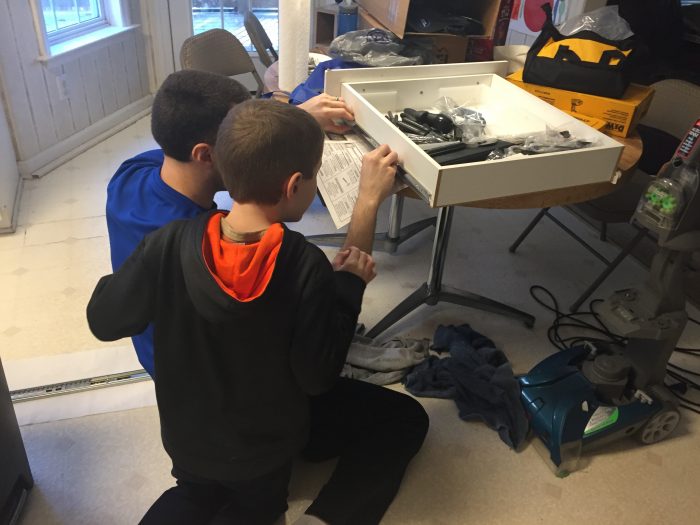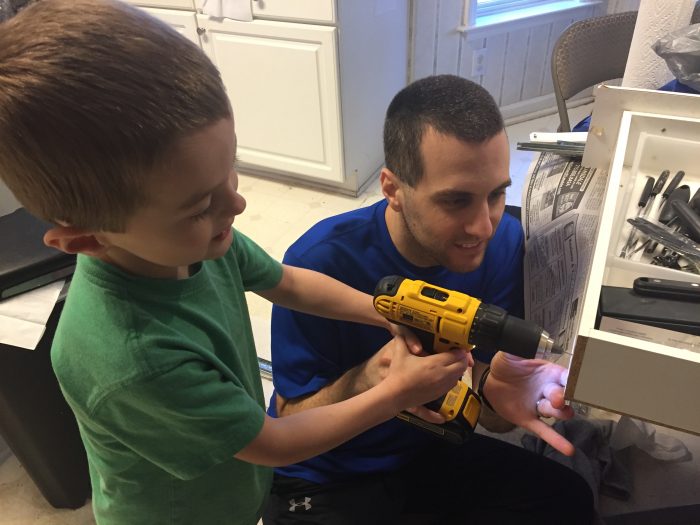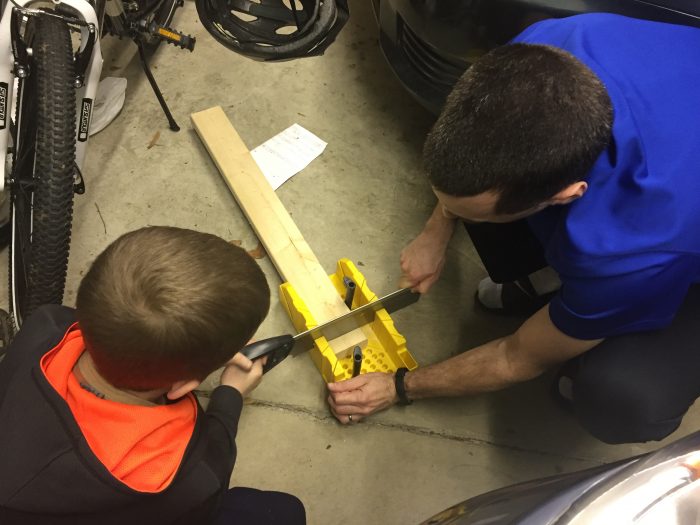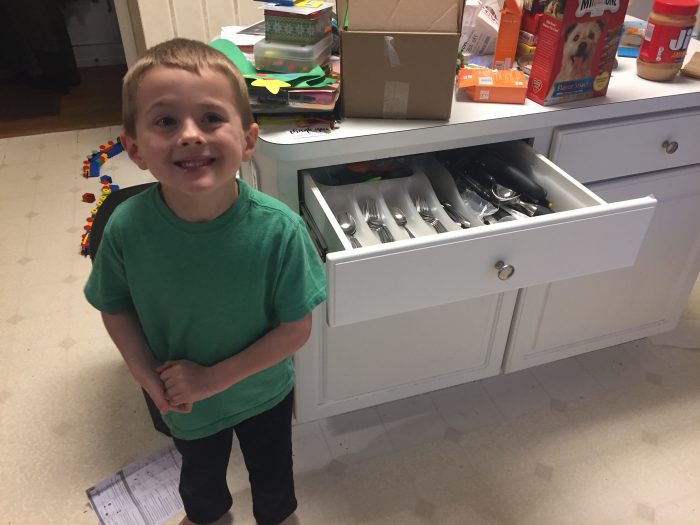My dad often said while I was growing up that he just wasn’t that handy around the house. He didn’t enjoy household projects, noting they were a good way to lose a whole day. When I became a homeowner and then a parent I too didn’t think I was that handy. After all, that would be an honest result of genetics. I often dread household projects too. However, I’m often willing to give them a try now, partially because I want my kids to learn from a young age how things work and how things can be repaired.
This weekend offered the perfect such opportunity.

Our kitchen drawer was hopelessly broken. I had tried several times to do a minor adjustment, but it was clear that a major overhaul was needed. All the old parts had to go. I went to the local big box hardware stores and they told me I needed to custom order exact replacements. The old drawer was 25 years old and a non-standard size – Google and Amazon searches returned nothing. I measured the hole (24″) and the gaps (1″), decided those must be standards, and purchased new standard parts. I suspected an adventure would be necessary to make them fit.

My favorite part of any project is using power tools! Thus to pique my son’s interest I look for opportunities for him to use the power tools as well. Before we use those tools I make sure to explain what I am thinking and what we will do next. My household fixing IQ may not be superb, but I do know “measure twice, cut once”, and we apply that principle liberally.
Our project was off to a good start. But when we did our second test measure we found a problem. Household projects always have lots of problems. This is what led to the “I can’t” philosophy in years past. With an “I can try” philosophy I try to step back and think rationally. My old drawer slides were non-standard size and the new parts were standard size. My sons and I looked at the fit (off by 1/2″) and decided to apply a shim.

Using a shim is one of my favorite do-it-yourself fixes. It feels like a hack, but it’s something anyone can do and often it is good enough for the job. In this case spending 15 minutes cutting a shim was worth a chance at success.

That previous paragraph smacked a little of Impostor Syndrome, something I have written about before. I may be a hack with my shims but look at what the original installer did! When I look at the old shim and all it’s cracks and failed holes, I can see the failed attempts, the hard work, and the determination of the original installer. This was clearly a person who didn’t know “I can’t” and only believed “I can try”.
The project continued with minor twists and turns but ended in success. The new kitchen drawer is installed and it purrs like a kitten! All three of us are filled with a sense of satisfaction with the lessons learned and the job well done.

Before today, if you had asked me if I could install a kitchen drawer, I would have said “I can’t”. I’m thankful I took a pause not only to say “I can try” but to show my sons what goes into household projects. They never go in a straight line – there are always surprises and false starts. Sometimes the project ends in failure and sometimes in success.
What are the things in your life that cause you to reflexively say “I can’t”? Are there any where you can instead say “I can try?” Better yet, can you bring anyone else on the trying journey?